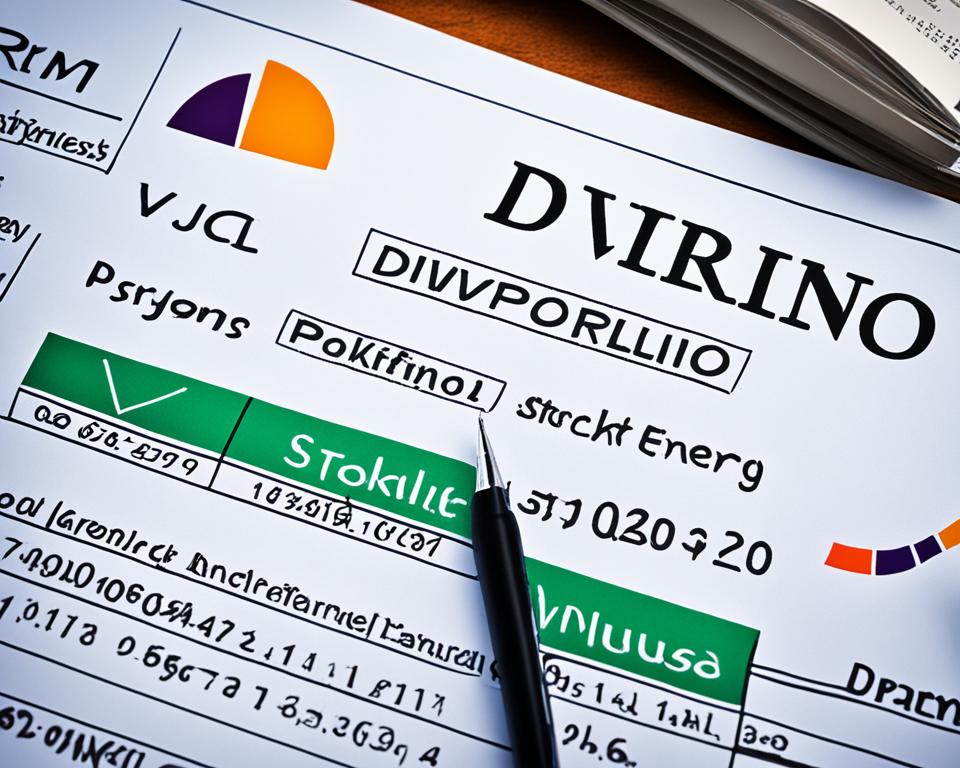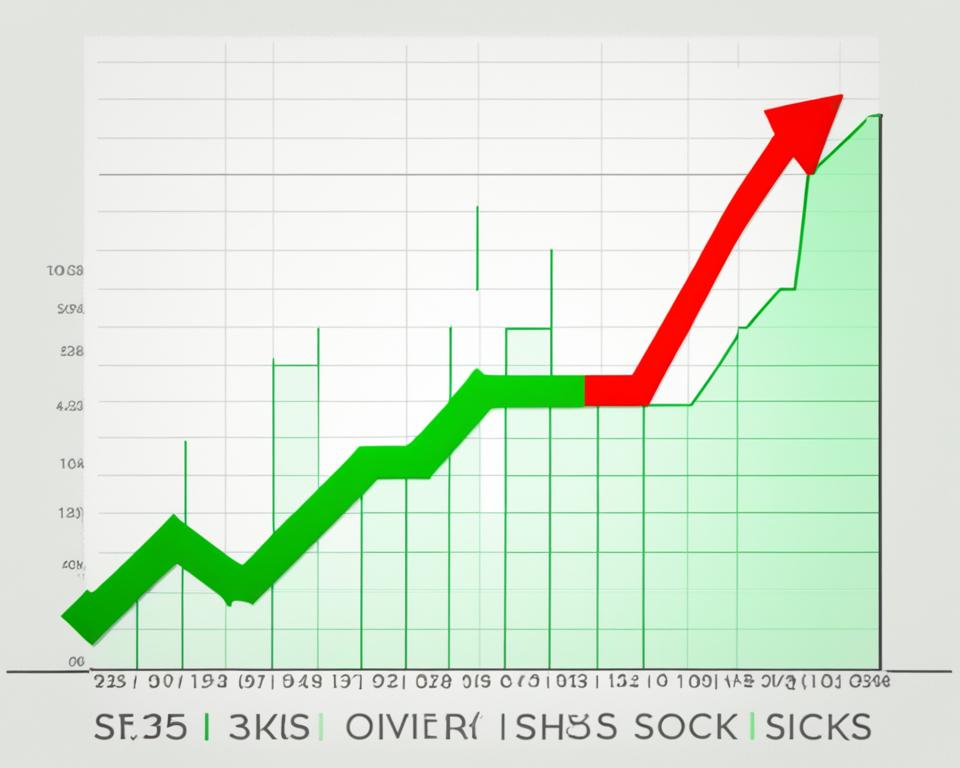As we navigate the investment landscape, understanding the rhythm of income streams from dividend stocks is pivotal. The dividend payout frequency is a testament to a company’s commitment to sharing profits with its shareholders. It’s not just about how much dividend stocks pay, but also how frequently this payment hits our accounts, shaping our financial planning. With the stock dividend schedule serving as a calendar for these financial events, investors are better equipped to forecast their revenue streams and align them with their cash flow needs.
Our purpose here is to demystify these periods between payouts—whether they’re monthly, quarterly, or annually. By doing so, we unveil the pattern of monetary rewards that are dispensed to investors like us, who hold shares in dividend-paying companies. There are various factors at play that influence a firm’s decision on dividend payout frequency, but one principle remains constant: the aim to maintain a reliable schedule that reflects the organization’s financial health and respect for shareholder returns.
Key Takeaways
- A clear grasp of dividend payout frequencies is crucial for investors to predict and manage their income from stocks.
- While most publicly-traded stocks opt for quarterly dividends, some entities, including REITs and MLPs, may disburse monthly.
- Dividend payment timelines are orchestrated by corporate management, aiming to match company earnings and shareholder expectations.
- Special dividends present additional, albeit less predictable, investment returns outside the regular dividend schedule.
- An awareness of the stock dividend schedule assists investors in aligning their financial strategy with their investment portfolio.
The Fundamentals of Dividend Payments
When we consider the bedrock of our investment portfolios, understanding the basics of dividend payments is essential. Dividends signify a company’s success and its ability to redistribute its earnings back to investors like us, punctuating the vitality of shareholder returns. As we delve into the principles governing dividend payment frequency and dividend payment intervals, we not only grasp their definitions but also acknowledge their profound impact on our investment strategies.
What Dividends are and Their Role in Investments
At their core, dividends are a portion of a company’s profits carved out and served to its shareholders, functioning both as a reward and a beacon of corporate well-being. These periodic financial distributions, commonly dispensed as cash or additional stock shares, are highly anticipated events on the calendar of an investor tracking how often do dividend stocks pay. They radiate signals of a firm’s profitability, stability, and long-term viability, underpinning why dividends are not merely about immediate gratification but also about fostering an enduring investment relationship.
Determining Factors Behind Dividend Payout Schedules
Several intertwined factors determine a company’s dividend payment intervals. The board of directors holds the reins, orchestrating when and how much to distribute. Their strategic decisions swing between retaining earnings to fuel potential growth or rewarding shareholders with a slice of their profits. The corporate symphony performed by these decision-makers aligns closely with the company’s liquidity, profit margins, and comprehensive future outlooks.
Let’s examine an insightful table that presents real examples of various dividend payment frequencies among renowned companies. This visual representation will enable us to gauge the periodic tempo set by these corporate entities and how it harmonizes with our investment needs.
| Company | Dividend Frequency | Most Recent Dividend | Yield |
|---|---|---|---|
| Apple Inc. (AAPL) | Quarterly | $0.82 | 0.6% |
| Realty Income (O) | Monthly | $0.2335 | 4.1% |
| Whitestone REIT (WSR) | Monthly | $0.095 | 4.52% |
| Walmart Inc. (WMT) | Quarterly | $0.55 | 1.6% |
In our collective journey as investors, our financial landscape is ever-fluctuating. Keeping our fingers on the pulse of dividend payment frequency and adapting our portfolios to the rhythm of returns help us thrive in this dynamic domain.
Typical Dividend Payout Frequencies
As we embark on the journey of dividend investment, comprehending the typical dividend payout frequencies is paramount to synchronize our financial expectations with actual corporate practices. The cadence of dividend distributions can often serve as a pulse for the health and strategies of companies we invest in. Dividend payout frequency analysis and dividend payment frequency comparison offer insights that help us make prudent decisions aligned with our investment goals.
Most Common Dividend Payment Intervals
The tapestry of dividend payment intervals weaves a pattern that reveals how often companies reward their shareholders. It’s widely observed that the quarterly payout is the benchmark in the U.S. market, although investors can encounter a range of frequencies catering to diverse financial needs and corporate structures. Let us explore this diversity beneath the umbrella of most common intervals.
- Monthly: Known for providing a steady income stream, particularly favored by investors who rely on regular cash flow.
- Quarterly: Most U.S. companies conform to a quarterly distribution, aligning with financial reporting cycles for strategic transparency.
- Biannually: Less common, but it brings a pair of sizeable payments that some investors might prefer.
- Annually: Though not as prevalent, annual dividends might relate to certain operational cycles or specific international markets.
Variances in Schedules and What Influences Them
The symphony of dividend payments isn’t uniform; the variability in schedules can be attributed to multiple factors. Corporate policies, industry norms, and underlying financial conditions such as earnings stability and operational cash flows are the conductors of this orchestra, determining the tempo and scale of payouts. For instance, REITs and MLPs are often mandated by law to distribute profits more frequently, thus potentially offering monthly dividends. Interest rates can also play a significant role—swaying the amount distributed in each dividend payment and potentially influencing how often they’re distributed.
The underlying economics, legal requirements, and financial robustness of companies command the frequency of these dividends. Our dividend payment frequency comparison reveals these variances and allows us, as investors, to calibrate our portfolios and financial projections according to the rhythms of dividend payouts.
| Company Structure | Typical Dividend Frequency | Influencing Factors |
|---|---|---|
| Regular Corporations | Quarterly | Corporate policy, Earnings reports |
| REITs | Monthly/Quarterly | Legal payout requirements |
| MLPs | Quarterly | Cash flow stability, Distribution laws |
| International Companies | Varies (Annual/Biannual) | Operational cycles, Regional market norms |
In dissecting the dividend payout landscape, it becomes evident how essential it is for us to tune into the dividend payment frequency trends. Such comprehension ensures that our anticipation of cash flow is in harmony with the actual dividend cadences of the companies in our investment portfolios.
How Often Do Dividend Stocks Pay
As we examine our investment portfolios, one question often surfaces: how often do dividend stocks pay? It’s a critical piece of knowledge for investors aiming to synchronize their income expectations with the actual performance of their investments. The stock dividend schedule is not just a timetable; it reflects the heartbeat of a company’s financial strength and its relationship with its shareholders.
Typically, dividend stocks favor a quarterly payment schedule, striking a balance between frequent shareholder rewards and practical cash flow management for the companies. This cadence is in step with standard financial reporting periods, providing a rhythm that underpins many investment strategies. However, as we peer deeper into the stock market’s melody, variations in this rhythm become apparent.
Enter entities like Realty Income, a notable exception with its monthly dividend payouts—a steady tune that has resonated for more than 600 consecutive months. This exceptional track record not only underscores the company’s robust financial system but also positions it as a beacon for those seeking more frequent income streams.
In addition, we encounter the unique sounds of special dividends. These are less predictable and not part of the regular dividend beat, often stemming from unusual profit scenarios or surplus cash. The occurrence of special dividends can add a surprising boost to a shareholder’s annual income, despite not following the usual stock dividend schedule.
To grasp the diversity in payout frequencies, let’s glance at a table that compiles data on several dividend-paying stocks and their respective schedules:
| Company | Dividend Yield | Frequency |
|---|---|---|
| Realty Income | 4.1% | Monthly |
| Apple Inc. | 0.6% | Quarterly |
| Whitestone REIT | 4.52% | Monthly |
| Costco Wholesale | 0.7% | Quarterly + Special Dividends |
Knowing how often do dividend stocks pay and the reasoning behind each company’s chosen interval is invaluable. It allows us to plan our financial moves with a rhythm that beats in sync with our cash flow needs and investment aspirations.
Special Dividends and Their Place in Payment Frequencies
As we explore the various aspects of dividend payout frequencies, an intriguing yet sporadic component of shareholder rewards emerges—special dividends. Distinct from the customary quarterly or monthly distributions, these payouts occupy a unique position in the investment world and deserve a closer examination to understand their potential impact on our financial planning.
Understanding What Constitutes a Special Dividend
Special dividends are distinctive in that they do not adhere to the typical dividend payment frequency trends. They are non-recurring payouts that companies may opt to distribute under extraordinary circumstances, such as substantial asset sales or abundant excess profits. For instance, a company like Costco Wholesale has punctuated its regular dividend cadence with significant special dividends, setting it apart as a noteworthy case in special dividend occurrences.
The Impact of Special Dividends on Expected Payouts
The introduction of a special dividend can sweeten an investment’s appeal by potentially boosting its trailing 12-month dividend yield. However, investors should note that these bonus payments do not usually factor into forward-looking dividend yield forecasts, as they are not expected to be a permanent fixture. Notably, the allure of a special dividend may not only reflect a company’s robust financial performance but also serve as a variable to consider within our broader dividend investment strategy.
Our anticipation of dividend income must, therefore, remain adaptive—not only to the regular intervals of payment but also to these exceptional special dividend announcements. As we lace our portfolios with a mix of stocks exhibiting different dividend payment frequency trends, we keep our eyes peeled for those potentially lucrative special dividends that can crop up without a set schedule.
| Company | Special Dividend Amount | Date Paid | Impact on Trailing Yield |
|---|---|---|---|
| Costco Wholesale | $10 per share | December 2020 | Increased by approx. 2% |
| Microsoft Corp | $3 per share | December 2004 | Increased by approx. 1% |
| Best Buy Co | $0.51 per share | October 2012 | Increased by approx. 1.5% |
Reflecting on the role that special dividends play in our investment strategy, we can appreciate their potential to enhance our returns. They remind us that while regular dividends form the steady beat of our income stream, occasionally, a special dividend can be the crescendo that enlivens our portfolio’s performance.
Monthly Dividend Stocks: An In-Depth Look
Within the realm of dividend payment frequency research, we often come across varied approaches that companies adopt to distribute their earnings to shareholders. Among these, monthly dividend stocks stand out as a robust option for investors seeking a regular and predictable income. This steady provision of dividends each month tends to align particularly well with the cash flow needs of certain groups, such as retirees or those who depend on investment income to cover their day-to-day expenses.
Real estate investment trusts, better known as REITs, are frequent players in the monthly dividend arena. By design, REITs hold and manage real estate portfolios, and due to specific tax requirements, they’re obligated to distribute a significant portion of their income as dividends to shareholders. This mandate often translates into monthly distribution models, which aid in providing a stable source of income.
Real Estate Investment Trusts (REITs): A Case Study
Let’s consider Whitestone REIT as a tangible example. A company specifically structured to meet the needs of both its occupants and investors, Whitestone REIT comes forth as a prominent figure in the monthly dividend territory. With an annual dividend yield that was marked at 4.52% as of August 2021, it proves to be an attractive proposition for shareholders interested not only in regular income but also in the potential for capital appreciation.
| REIT | Monthly Dividend | Annual Dividend Yield | Market Position |
|---|---|---|---|
| Whitestone REIT | $0.095 | 4.52% | Stable Earnings |
When we engage in dividend payment frequency research, it becomes evident that monthly-paying REITs have carved a niche for themselves within the investor community. They offer a blend of frequent income and potential for upside, which is particularly pertinent considering the real estate market’s nuanced cycles and performances.
As we continue to explore the landscape of monthly dividend stocks, it’s important to note that the stability of a REIT in terms of its asset quality and occupancy rates could play a critical role in the sustainability of monthly dividends. For us as investors, delving deep into the particularities of each REIT, much like inspecting Whitestone REIT’s financials or the asset value, ensures we join hands with entities that can maintain, or even grow, their monthly dividend distributions over time.
Quarterly Payouts: The Standard for Dividend Distribution
In the corporate arena, the echos of quarterly dividend payments are heard loud and clear, striking a chord with the rhythms of financial reporting. As we plunge into this standard practice, it’s intriguing to see how the essence of a corporate dividend policy is often reflected in the tempo of these payouts. The rigidity of these timeframes isn’t just a matter of convention; it’s a harmonized dance between corporate transparency and investor expectation, choreographed to the tune of fiscal prudence and strategic rhythm.
Why Quarterly Payments are Predominant Among Corporates
The symphony of quarterly payments resonates with the fiscal reporting calendar, offering investors a reliable income stream aligned with earnings announcements. When the likes of Apple, Coca-Cola, and AT&T issue their dividend declarations, it correlates seamlessly with their quarterly financial health checkpoints. This rhythm not only promotes a sustained dialogue between a company and its shareholders but also supports the intricate financial and strategic planning undertaken by these corporate titans.
As we delve deeper into the fabric of quarterly dividends, it emerges as a deliberate choice, a resonance of dependability. It speaks of a company’s commitment to predictable shareholder remuneration, reinforcing the underpinnings of trust and foresight in the realms of investment. This tempo—aligned with spaced-out financial disclosures—allows for consistent and informed cash flow management on both ends of the spectrum, whether within the expansive vaults of corporate reserves or the curated portfolios of individual investors.
A testament to this standard is evident in the financial chronicles of the stock market, where patterns emerge not as mere happenstance but as cultivated traditions. Thus, amidst the oscillations of the economic climate and the varied strums of market performance, quarterly dividends remain a cornerstone, a touchstone of rhythm that investors rely upon—a metronome to our fiscal melodies that echoes four times each year with unwavering consistency.
Annual and Semi-Annual Dividends: Less Common but Still Relevant
In our collective journey through the world of dividends, while the quarterly and monthly dividend drums beat the loudest, there exists a quieter, yet significant tune played by annual dividend and semi-annual dividend payments. These less frequent disbursements may not be the norm, especially in the bustling U.S. markets, but they do find their way into the portfolios of patient investors who understand their unique value.
Indeed, the decision for a company to opt for annual or semi-annual dividends may hinge on specific operational cycles or perhaps tie into the geographic reality of where the company finds its home. Distinct dividend distribution traditions across the globe mean that these payment frequencies, while not as prevalent domestically, are integral parts of the international investment score.
- Annual dividends might appeal to the investor who prefers a singular, sizeable payment. It’s a financial crescendo that comes once a year, often mirroring a company’s annual operational review or reflective of regions where annual distributions are customary.
- Semi-annual dividends, on the other hand, strike twice a year, potentially offering a middle ground for investors seeking more than a quarterly payment but less than the weight of annual distribution. This cadence can be seen in markets abroad, serving as a bridge between corporate financial strategies and investor expectations.
Such dividends often dance to a different rhythm than what many U.S.-based investors are accustomed to. Yet they contribute significantly to the diversity of an investor’s portfolio, and their larger lump-sum nature may be particularly attractive for specific financial planning strategies—aligning neatly with investment aspirations or life events that demand a hefty sum at particular times of the year.
Tapping into the potential of these less frequent dividend types means embracing their rhythm and adjusting our investment choreography accordingly. It’s a financial minuet that promises strategic benefits and aligns with the adage that ‘good things come to those who wait’. So, let’s not overlook the subtle yet potent impact of annual dividend and semi-annual dividend payments in the grand symphony of investment returns.
Dividend Payment Dates Explained
For us, as dividend investors, the journey towards maximizing our returns calls for a deep understanding of the pivotal dates that punctuate the dividend payment process. It’s not merely about the quantities we receive; the timing of when these payments land in our accounts—marked by the ex-dividend date, record date, and payment date—can significantly influence our investment strategy and cash flow planning.
The Significance of Ex-Dividend, Record, and Payment Dates
Nestled within the stock market’s calendar, three dates stand out as the gatekeepers of dividend disbursements. The ex-dividend date signals a threshold that prospective shareholders must cross if they wish to reap the benefits of the upcoming dividend. This is the date when a stock begins trading without the value of its next dividend payment—transacting any day forth won’t include entitlement to the imminent dividend.
Following closely is the record date, where the company finalizes its roster of shareholders eligible for the dividend. Being a shareholder before or on this day is akin to having a confirmed ticket to the dividend payout event. Our meticulous attention to these dates pays dividends in literal terms; missing them could mean bypassing potential income that our portfolios could relish.
The curtain call of the dividend timeline is the dividend payment date. This is the day when the fruits of our investment decisions manifest directly into our accounts. Companies declare this date well in advance, clarifying when the promised payout will transition from a figure on paper to actual financial nourishment for our accounts.
Strategizing Investment Based on Dividend Dates
Our strategy as investors takes on a dynamic edge when we align our stock purchases and sales with these crucial dates. By buying shares ahead of the ex-dividend date, we ensure eligibility for the upcoming payout, while selling post this date keeps that dividend intact for us. This tactical dance around the dates could enhance our dividend income, stringing together a melody of timely, informed investment moves.
Conversely, timing the sale of shares following an ex-dividend date allows us to possibly reap the twin benefits of dividend earnings and capital gains on the shares sold. Savvy navigation around these dates, predicated on comprehensive understanding and astute anticipation, can position us to maximize returns and enforce a rigorous rhythm to our income streams.
Ultimately, these dates are more than mere markers—they are the beats to which the tempo of our dividend strategies sync. With each tick, they etch a deeper impression upon our financial planning, reminding us that in the symphony of investment, timing is not just a note—it’s the entire melody.
Understanding Dividend Yield in the Context of Payout Frequency
When we discuss the income-producing potential of our investments, a fundamental indicator we often hinge on is the dividend yield. It’s a tangible representation of what we can expect in return for our investment. Navigating this concept requires not only understanding its significance but also mastering the intricacies of calculating dividend yield against varying payout frequencies. Whether a stock pays dividends monthly, quarterly, or annually can significantly affect our income projections and investment strategy.
Calculating Dividend Yield
To calculate dividend yield, we take the most recent dividend payment, forecast the annual frequency—how many times a year the payment is issued—and divide this figure by the stock’s current market price. For instance, if a company pays a quarterly dividend of $0.50 per share, and the current share price is $40, our calculation would be ($0.50 x 4) / $40, resulting in a dividend yield of 5%. This simple formula equips us with an invaluable framework through which we can evaluate the attractiveness of different dividend-paying stocks.
How Payout Frequency Affects Yield Calculations
The frequency of dividend payments bears a significant influence on the yield’s calculation. For example, with quarterly payments, the compounding effect can be less pronounced as opposed to monthly dividends, which may compound more frequently. As such, knowing the payout frequency is pivotal in appraising an investment’s potential income. Interestingly, the occurrence of special dividends—additional distributions that can happen outside the normal payout schedule—can also swing our calculated yields. These occasional windfalls should be treated as bonuses, as they are not guaranteed to happen annually.
As savvy investors, we’re always on the lookout for stocks that not only offer high dividend yields but also suit our desired payout schedules. Understanding the calculations and how frequency impacts our returns puts us in command of our financial planning, allowing us to optimize our income streams and ensure they align with our monetary goals.
| Company | Recent Dividend Per Share | Share Price | Annual Dividend Estimate | Dividend Yield |
|---|---|---|---|---|
| Realty Income | $0.2335 | $68.34 | $2.802 (monthly) | 4.1% |
| Apple Inc. | $0.82 | $150.00 | $3.28 (quarterly) | 2.19% |
| Whitestone REIT | $0.095 | $25.17 | $1.14 (monthly) | 4.52% |
We’ve established a clear foundation for how dividend yield and payout frequency are intertwined, and how this nexus can influence our investment decisions. With this knowledge, we’re better equipped to navigate the stock market waves, anchoring our choices in levers that offer both the right yield and frequency in line with our unique financial aspirations.
Investment Strategies: Maximizing Returns from Dividend Frequencies
Exploring the landscape of dividend investment, we recognize that returns are not solely based on the dividends themselves but also on the timing of these payments. A key to amplifying our investment outcomes lies in the dividend payment frequency trends that shape our portfolio’s performance.
Choosing the Right Dividend Paying Stocks
The quest to enhance our investment returns begins with a choice—selecting the right dividend-paying stocks. For us, this means diving deep into the historical dividend-payments of companies. These histories reveal consistencies or increases in payments, signaling a company’s financial stability and its commitment to shareholders. We also scrutinize payout ratios; an excessively high ratio could indicate a dividend that is not sustainable in the long term. Meanwhile, companies with a strong track record within their sectors often emerge as our top picks, presenting a compelling argument for inclusion in our investment mix.
Portfolio Diversification and Dividend Frequencies
In pursuit of optimizing our portfolio, we implement a diversification strategy that includes an array of dividend frequencies. A well-diversified portfolio allows us to spread risk and income prospects across a spectrum of industries and payment cycles. While a monthly dividend stock might offer a consistent cash flow, a quarterly payer could align better with our long-range financial goals. When it comes to portfolio diversification, it is not just about scattering our investments, but strategically positioning them in a way that the different dividend frequencies contribute to a steady and reliable income stream.
Moreover, geographical spread and tax implications are critical in our dividend strategy. Different regions offer varying tax advantages on dividends, which can influence which dividends we choose to pursue. For example, some countries have preferential tax treatment for dividend income which could be a deciding factor for international dividends investments. Here’s a closer look at how dividend yield and sector segmentation play a role in diversifying our portfolio:
| Sector | Average Dividend Yield | Frequency Trend |
|---|---|---|
| Utilities | 3.5% | Quarterly |
| Real Estate | 4.2% | Monthly/Quarterly |
| Technology | 1.2% | Quarterly/Semi-Annual |
| Consumer Goods | 2.8% | Quarterly |
As we orchestrate our investment symphony, we stay attuned to the evolving dividend payment frequency trends and remain vigilant in rebalancing our portfolios to match our desired outcomes. Our fortitude in portfolio diversification, coupled with an astute selection of dividend frequencies, sets the stage for turning investment aspirations into financial success.
Dividend Payment Trends and Future Outlook
As we reflect on the trajectory of dividend payments, certain patterns emerge, shedding light on what we, as investors, might anticipate in the times ahead. Historical consistency has given way to a more fluid landscape, nudging us to assess how these shifts could refine our strategies and forecast our potential returns.
Past Trends in Dividend Payout Frequencies
The historical narrative of dividend disbursement reveals a strong penchant for quarterly payments. For years, this approach has been a bedrock for companies with steady profits, optimizing a balance between financial health and shareholder satisfaction. It’s a rhythm ingrained in the investor psyche—predictable and reassuring. But the winds of change are blowing, and they’re laden with notes of flexibility and heightened expectations.
What Investors Might Expect in Future Dividend Practices
As we step into the future of dividend payments, we may spy a horizon that’s vastly different from the one to which we’ve grown accustomed. Industry experts are forecasting an era that’s more aligned with the need for frequent and dynamic income streams. Notably, the ascent of REITs and their monthly dividends signals this shift. Real estate investment trusts, compelled by regulatory frameworks, have been pioneering monthly dividend frequencies, potentially charting a course for others to follow.
The dividend investor outlook must, therefore, account for evolving global market trends and the bespoke strategies of individual companies. An agile investment strategy—one that’s responsive to these changes—may well be pivotal in securing a robust dividend income flow. Witnessing the increasing embrace of special dividends as a supplemental strategy and the penchant for more frequent distribution models, the role of these dividends is becoming ever more strategic in portfolio management.
| Dividend Frequency | Companies Adopting | Impact on Portfolio |
|---|---|---|
| Quarterly | Established Corporations | Stable Baseline Income |
| Monthly | REITs | Increased Cash Flow |
| Special Dividends | Companies with Excess Profits | Opportunistic Gains |
Understanding these trends doesn’t simply inform us of when we’ll next see dividends deposited into our accounts; it provides a crystal ball into the metamorphosis of income investment strategies. For those of us keenly observing, participating, and capitalizing on these developments, staying abreast of the future of dividend payments is not just insightful, it is essential. In this financial symphony, our roles as dividend investors are both as audience and conductor, eliciting an income concerto that’s attuned to the movements of an ever-evolving score.
Conclusion
As we bring our exploration of dividend payout frequencies to a close, we reflect on the broad spectrum of options these schedules present to us. Whether it’s the steadiness of monthly dividends or the anticipation of quarterly payouts, these rhythms offer us diverse ways of engaging in long-term dividend investment. Companies may set their dividend payment schedules based on a combination of factors, including financial performance and strategic objectives, offering us opportunities to tailor our income investment strategy accordingly.
Recap of Dividend Frequencies and Investor Implications
Dividend payout frequencies shape the kind of income stream we can expect from our investments. The meticulous orchestration of these payments by corporations is influenced by a dynamic set of factors from market trends to internal financial decisions, all aimed at maximizing profit-sharing with shareholders. As investors, staying attuned to these payout schedules is pivotal in crafting our income investment strategy. By understanding the nuances of dividend frequencies, we can more effectively align our financial tactics with our investment holdings.
The Role of Dividend Frequencies in Long-Term Investment Planning
In the realm of long-term investment planning, dividend frequencies act as a strategic factor, enabling us to forecast and manage our investment returns over time. With an evolving financial landscape, an essential part of our role is to stay updated on current and emerging trends in dividend practices. This knowledge not only guides us to make informed decisions but also helps ensure that the dividend-paying assets within our portfolio resonate with our long-term dividend investment goals. Let us move forward with the insights gained and continue to navigate the journey of dividend investing with confidence and acumen.
FAQ
What Are Dividends and What Role Do They Play in Investments?
Dividends are portions of a company’s earnings distributed to shareholders, typically in the form of cash payments or additional stock. They serve as an incentive for investment and can be indicative of a company’s financial health and profitability. Dividends provide shareholders with a regular income stream and are an important factor in total investment return.
What Determines the Frequency of Dividend Payouts?
Dividend payout schedules are determined by factors such as a company’s cash flow, profitability, and management’s strategic decisions regarding the retention of earnings for reinvestment or distribution to shareholders. The board of directors of a company approves the frequency and amount of dividends paid out.
How Often Do Most US Companies Pay Dividends?
Most U.S. companies typically pay dividends on a quarterly basis, aligning with their quarterly earnings announcements and updates. This cadence is preferred for its alignment with financial reporting periods and for managing strategic planning and cash flow.
What Are the Variations in Dividend Payment Schedules?
While quarterly payments are the most common, dividend payment schedules can vary to include monthly, semi-annual, and annual payouts. These variations are influenced by industry practices, corporate policies, and legal payout requirements, as seen with REITs and MLPs. Furthermore, macroeconomic factors like interest rates can also affect dividend frequencies and amounts.
What is a Special Dividend?
A special dividend is a non-recurring payment made to shareholders that occurs outside a company’s regular dividend schedule. It is typically issued in response to exceptional circumstances such as significant surplus profits or after major asset sales, offering an extra return to investors beyond the ordinary dividends.
How Do REITs Approach Dividend Payments?
REITs are required by law to distribute a majority of their taxable income to shareholders and often do so on a monthly basis. This high frequency of dividend payments provides shareholders with a consistent and regular income stream. Monthly dividends from REITs can be especially attractive to investors seeking steady cash flow.
Why Are Quarterly Dividend Payments Predominant in the Corporate World?
Quarterly dividend payments are predominant because they balance the interests of both the company and the shareholders. They provide a steady income stream for investors while allowing companies to manage cash flow and profit distribution with respect to their operational and financial cycles.
Are Annual and Semi-Annual Dividends Common?
Annual and semi-annual dividends are less common than quarterly dividends but are still used by some companies, particularly those based in regions where these frequencies are customary, or by companies within industries that have specific operational cycles that influence their ability to distribute dividends.
What Is the Significance of Ex-Dividend, Record, and Payment Dates?
The ex-dividend date determines who is eligible to receive the declared dividend, excluding shareholders who purchase the stock from that date onwards. The record date is the cutoff for determining which shareholders are entitled to the dividend. The payment date is when the dividend is actually disbursed to shareholders. These dates are crucial for investment strategies and timing.
How Do You Calculate Dividend Yield?
Dividend yield is calculated by taking the most recent dividend payment, multiplying it by the expected annual payment frequency, and dividing that figure by the current share price. This result expresses the dividend as a percentage of the investment’s value and helps investors understand what income to expect from their shares annually.
How Can Investors Maximize Returns Through Dividend Frequencies?
Investors can maximize returns by selecting dividend-paying stocks with favorable yields and payout frequencies, analyzing a company’s historical dividend stability and payout ratio, and considering tax implications. Portfolio diversification across various industries and payment intervals can further enhance returns and reduce risk.
What Future Dividend Payout Trends Should Investors Anticipate?
Investors might expect trends to include a continued preference for quarterly dividends among established corporations, a rise in special dividends contingent on corporate profits and cash reserves, and an increase in monthly dividend payments from investment vehicles like REITs, reflecting shareholder preference for more frequent income streams.












